It’s no secret that video is a powerful marketing tool. According to one survey, an astounding 92% of video marketers reported that video gives them a good ROI. But producing videos that effectively capture attention is no easy task.
The biggest challenge you’ll face is coming up with creative video ideas. If engagement is your main objective, try promoting your business through an animated video.
Contrary to popular belief, you don’t need expensive software to create animated clips. In fact, you can make these videos for free. Check out some of the best free animation software for beginners, experts, and everyone else.
Top 13 free animation software for beginners and pros
1. Animaker
Platforms: web-browser-based
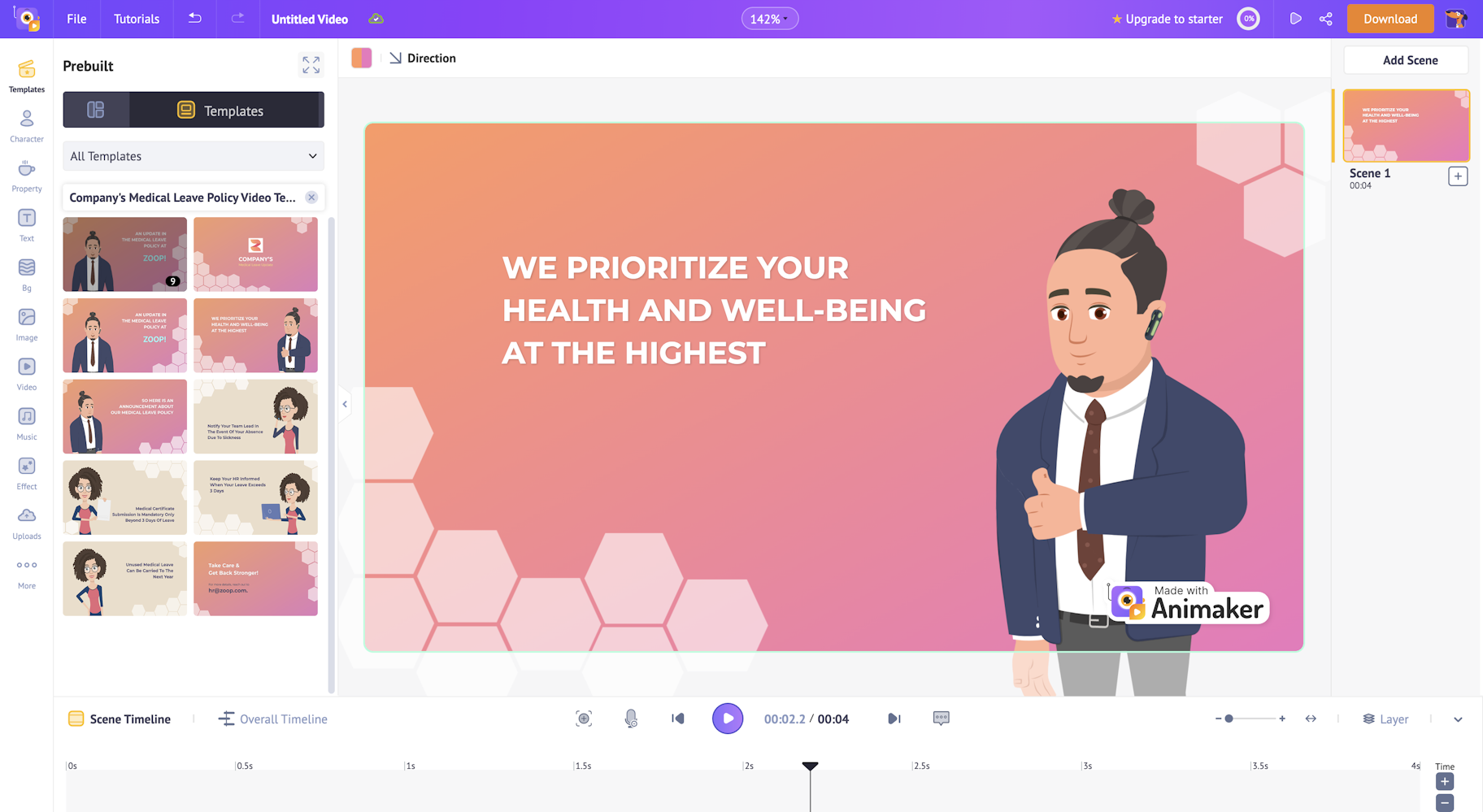
Animaker is a free animation software for beginners, with easy drag-and-drop functionality and an intuitive interface to match. There are six core types of videos you can make with Animaker:
- 2D
- Infographics
- Handcraft
- Whiteboard
- 2.5D
- Typography
With full HD support, horizontal and vertical video layouts, and premade graphics, you can create fun, animated videos in no time.
Audio features include text-to-speech, the option to add background music and sound effects, and voiceover. You can choose from Animaker’s library of sounds or upload your own tunes.
If you want to pay for the pro version, you can also get advanced features: in-app camera, multimove, curves, transition effects, and enter/exit effects. It’s like all those PowerPoint animations, except cool and not so cheesy.
2. Blender
Platforms: Windows, Mac, Linux
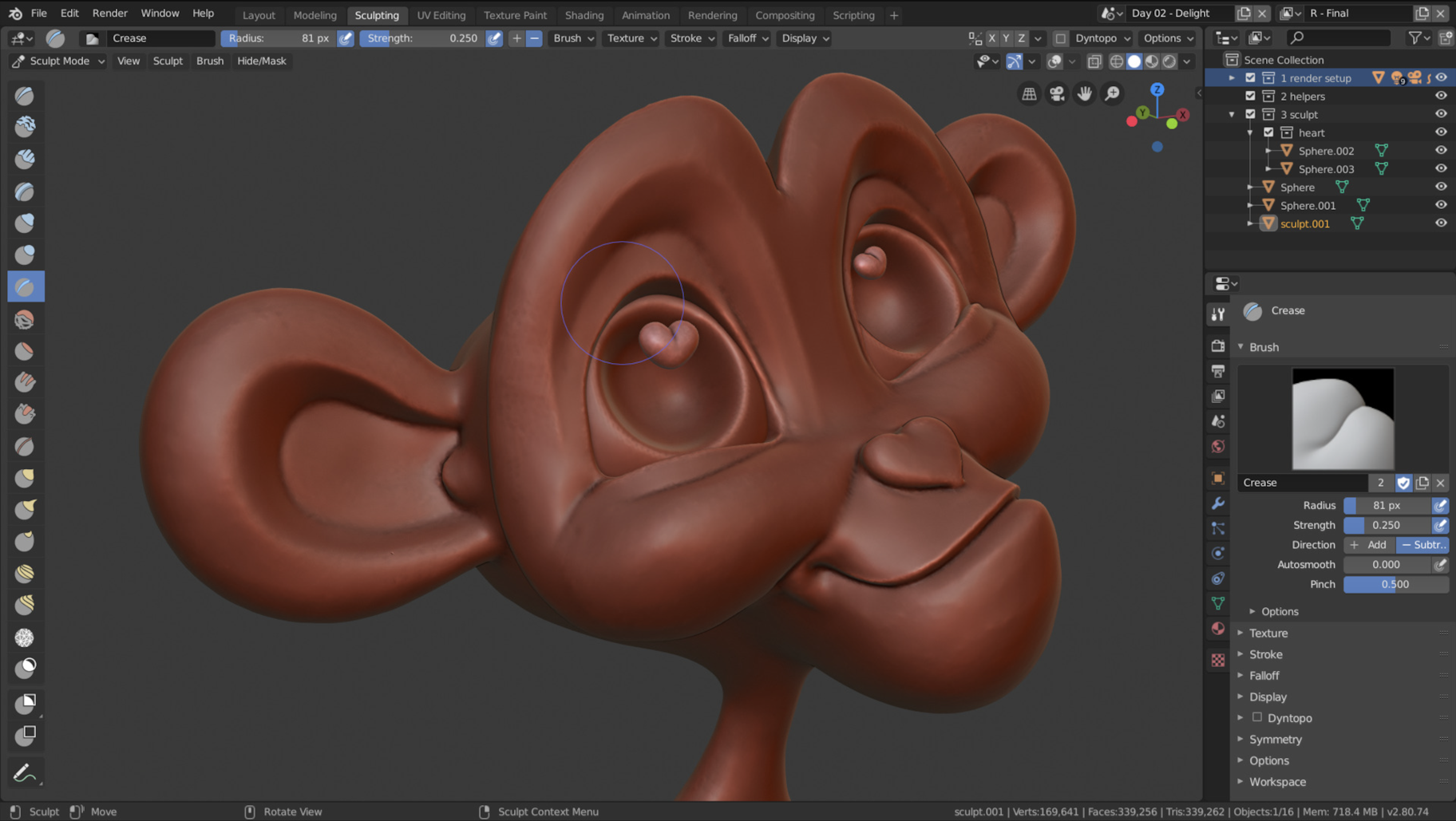
Blender is another best video animation software for pro editors and creators. Its high-quality modeling, rendering, and sculpting features make it easy to create engaging video content.
Here’s a brief look at its features:
- Rendering: Blender offers Cycles, a ray-trace-based production render engine; FreeStyle, an edge- and line-based non-photorealistic (NPR) rendering engine; and real-time feedback that speeds up the editing process.
- Modeling: Blender’s modeling tools include sculpting, retopology, modeling, curves, and more.
- Sculpting: Digital sculpting tools are flexible for each stage of the digital production pipeline.
- Animation and rigging: These tools include a character animation pose editor, non-linear animation (NLA) for independent movements, IK forward/inverse kinematics for fast poses, and sound synchronization.
- Grease pencil: Draw directly in 3D and combine 2D/3D art.
- VFX: From camera and object motion tracking to masking and compositing, there are lots of fixes you can make in post-production.
- Simulation: Create simulations for fog, smoke, rain, fire, liquid, and more.
- Pipeline: Choose from a long list of import/export options.
- Video editing: A built-in video editor allows for basic actions like video cuts and splicing, as well as more complex tasks, such as video masking or color grading.
Overall, Blender is a comprehensive tool and completely free to use.
Editor’s note: We also review Blender, along with 29 other video-editing tools, in this review.
3. K-3D
Platforms: Windows, Linux
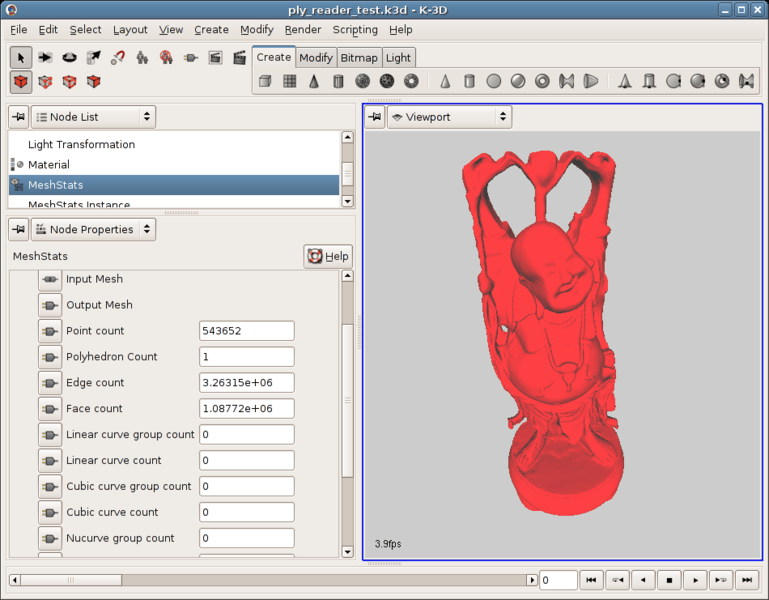
K-3D is a free software you can use to create animations. It’s great for making 3D models using shapes called polygons. You can even integrate third-party plug-ins with it—K-3D’s visualization pipeline architecture helps it adapt to and sync with the tools you use.
Starting out is easy with K-3D’s Wiki tutorials. They walk you through features like adding textures, creating shadows, and ensuring your models are perfectly symmetrical.
One highlight of Blender is its easy undo/redo function. With it, you can quickly correct mistakes and keep your creative process smooth and uninterrupted. This feature is especially helpful when you’re exploring different design ideas.
Moreover, Blender offers both procedural and parametric workflows. This means you can make adjustments and see the results immediately. Its node-based system allows for creating connections between various elements in your video.
In essence, K-3D is a versatile and powerful tool for anyone interested in animation and video creation.
4. OpenToonz
Platforms: Windows, Mac, and Linux
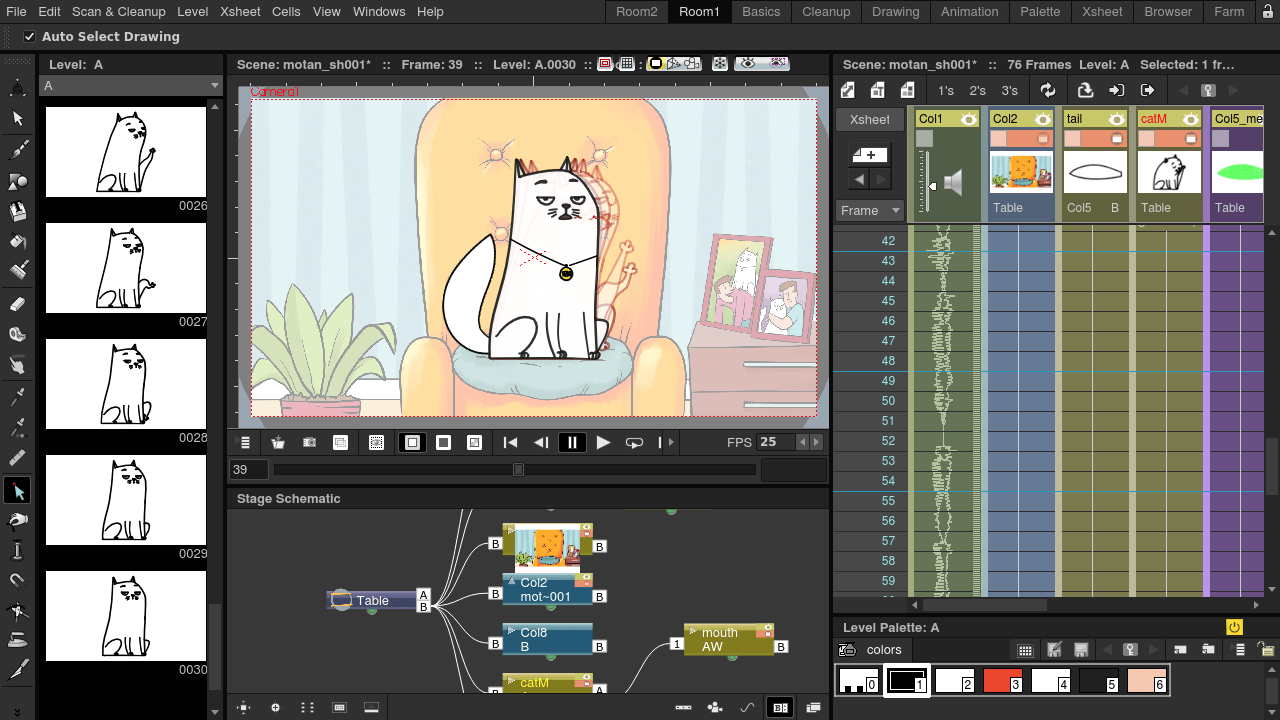
OpenToonz is a top choice for creating 2D videos, and it’s completely free for both personal and commercial use. This means you can use it to craft marketing videos for your brand at no cost.
The software provides all the basic video editing features, plus a lot more. Here’s a rundown:
- Digital drawing tools: Users get both vector and bitmap options.
- Indexed color palettes: These make painting and color changes quick and easy.
- Effects and compositing: Add animated special effects and composite scenes. You can choose from a wide range, including blurs, lighting effects, and more than 100 other options.
- Scripting: Automate processes using an ECMA-compatible scripting engine.
- Motion tracking: Blend your animations with live-action video footage.
- Scan and cleanup: Convert paper drawings into digital vectors.
- Frame-by-frame animation: This feature includes configurable onion skin settings.
- Motion tweening: Link objects or use motion paths for complex movements.
- Particle Systems: Ideal for creating effects like rain, dust, and more.
You can make some cool animations with this tool. Here are some examples of animation that we found on X (formerly Twitter):
- https://twitter.com/tonygaddisart/status/1087045058417684480
- https://twitter.com/DarrenTAnims/status/1176928091811254272
- https://twitter.com/Ghostiesfm/status/1176645497240588288
And if you ever encounter difficulties, OpenToonz’s user community and Github forums are great resources for help and advice.
5. Pencil2D Animation
Platforms: Windows, Mac, and Linux
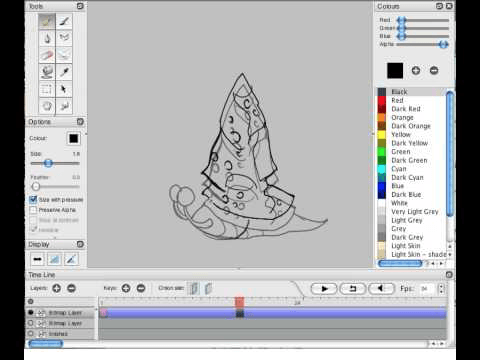
Pencil2D is a simple animation software you can use to create hand-drawn 2D videos. Its minimal interface lets you focus more on animating and less on figuring out the controls.
Here are some of its features:
- Image and audio import: You can add images and soundtracks to your animations.
- Frame rate adjustment: Control the speed and smoothness of your animations.
- Raster and vector workflows: Switch between these two modes to sketch, ink, and paint with ease.
- Distortion and lighting effects: Enhance your animations with special visual effects.
- Onion skinning: This feature helps you see several frames at once, making the animation process smoother.
- Pressure sensitivity: If you use a drawing tablet, this feature helps in creating more natural, varied strokes.
- Toolbar customizations: Tailor the interface to suit your workflow.
- Multiple export formats: You can save your animations in various formats, making it easier to share or integrate into other projects.
Whether you’re a hobbyist or a professional, Pencil2D offers a straightforward yet powerful solution for 2D animation.
6. Plastic Animation Paper
Platforms: Windows, Mac, and Linux
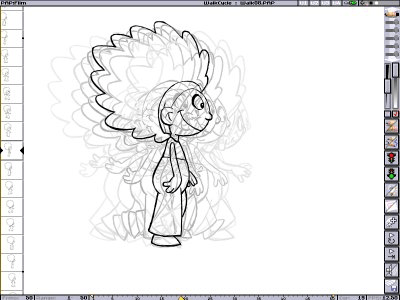
Though its interface is outdated, Plastic Animation Paper (PAP) is free to download and use.
With PAP, you can create hand-drawn 2D animations while seeing your edits in real time. The editing experience can be clunky, but it’s easy for beginners to learn and become familiar with.
Feature highlights include basic drawing tools, zoom, rotation, cutouts, layers, and more.
Soon, PAP’s creator will release a new, more advanced program for $79, called Animation Paper.
Best suited for skilled animators, Animation Paper will help animators create 2D graphics from hand-drawn illustrations, along with a long list of features:
- Small and large format frames
- Real time, smooth rotation and zoom, along with multiple options for flipping
- Advanced and customizable onion skinning
- Layers and lasso
- High-quality lines and stabilization
- Coloring and paint
- Real-time full-frame reference on a second monitor for quick editing
When you’re done creating your animated video, export options include .mp4, .mov, and .png or .svg frame stacks.
7. Powtoon
Platforms: web-browser-based
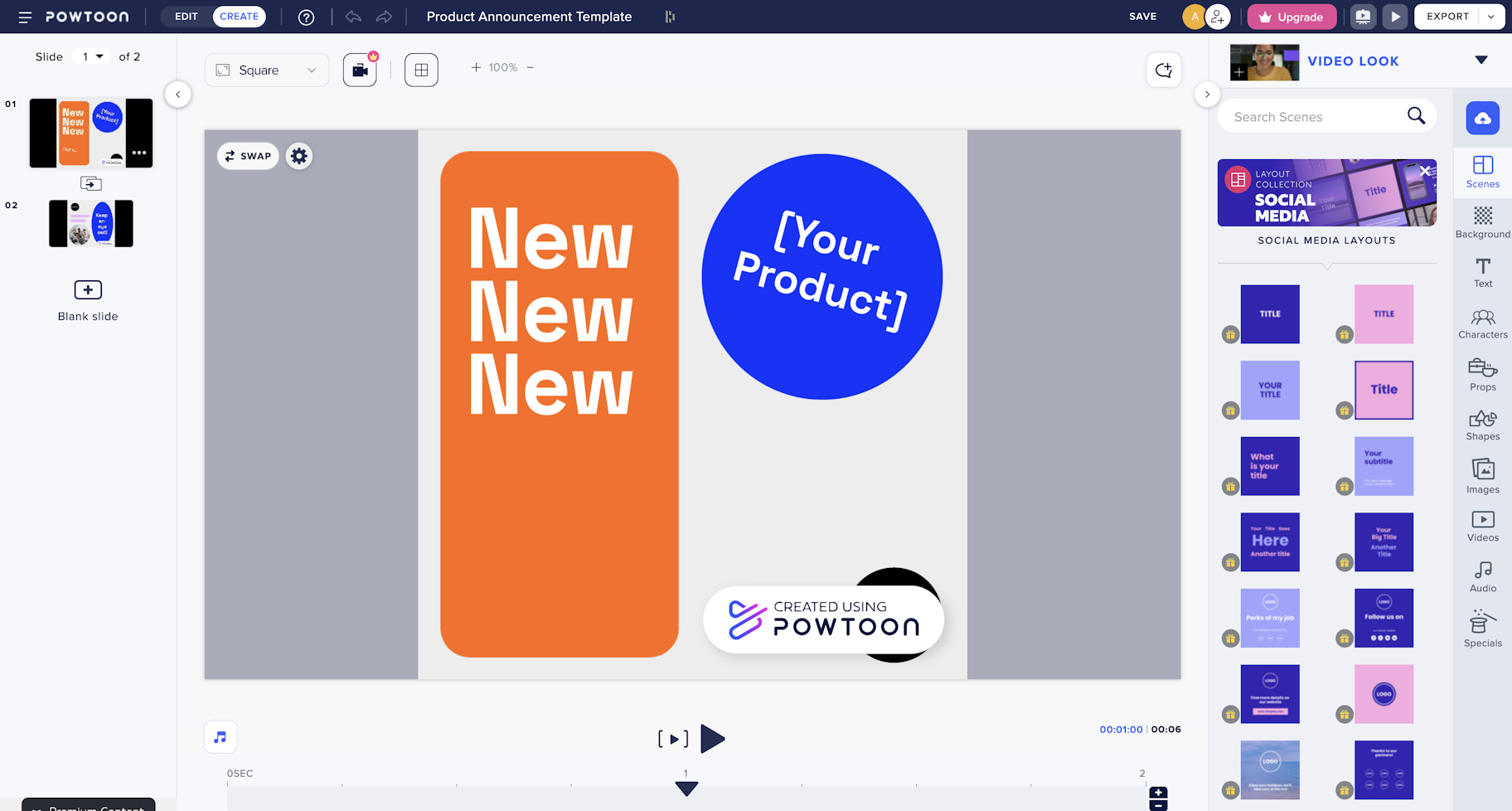
Powtoon is a user-friendly tool for creating dynamic video presentations. While it offers paid versions with extra features, its free version lets you make videos up to three minutes long. This makes it a solid choice for anyone starting in video creation.
Here’s what the free version of Powtoon includes:
- Custom styles: Personalize your videos to match your vision.
- Various aspect ratios and sizes: Fit your video to any platform or purpose.
- Multiple export options: You can export to YouTube, Facebook, Wistia, Vimeo, PowerPoint, and PDF.
- Comprehensive media implementation: Integrate full videos, animations, GIFs, and images into your projects.
Powtoon is ideal for beginners. It offers a range of professional-looking templates, perfect for animated explainers, infographics, and product promotions. You can also start from scratch or use a PowerPoint theme.
8. Stykz
Platforms: Windows, Mac, and Linux

Stykz is one of the easiest animation software to use. With it, you can make basic 2D stick figure animated videos.
Stykz is frame-based, meaning you work on one individual frame simultaneously. It uses onion skins so you can see the previous frame and how the two flow together.
All edits are done within the “stage”—in other words, you make your edits and view your changes within the same window. No toggling between views is needed.
Edit one or multiple stick objects, fill shapes, and import your own stick figures. Everything will auto save as you go, so you don’t need to worry about losing all your hard work.
9. Synfig Studio
Platforms: Windows, Mac, and Linux
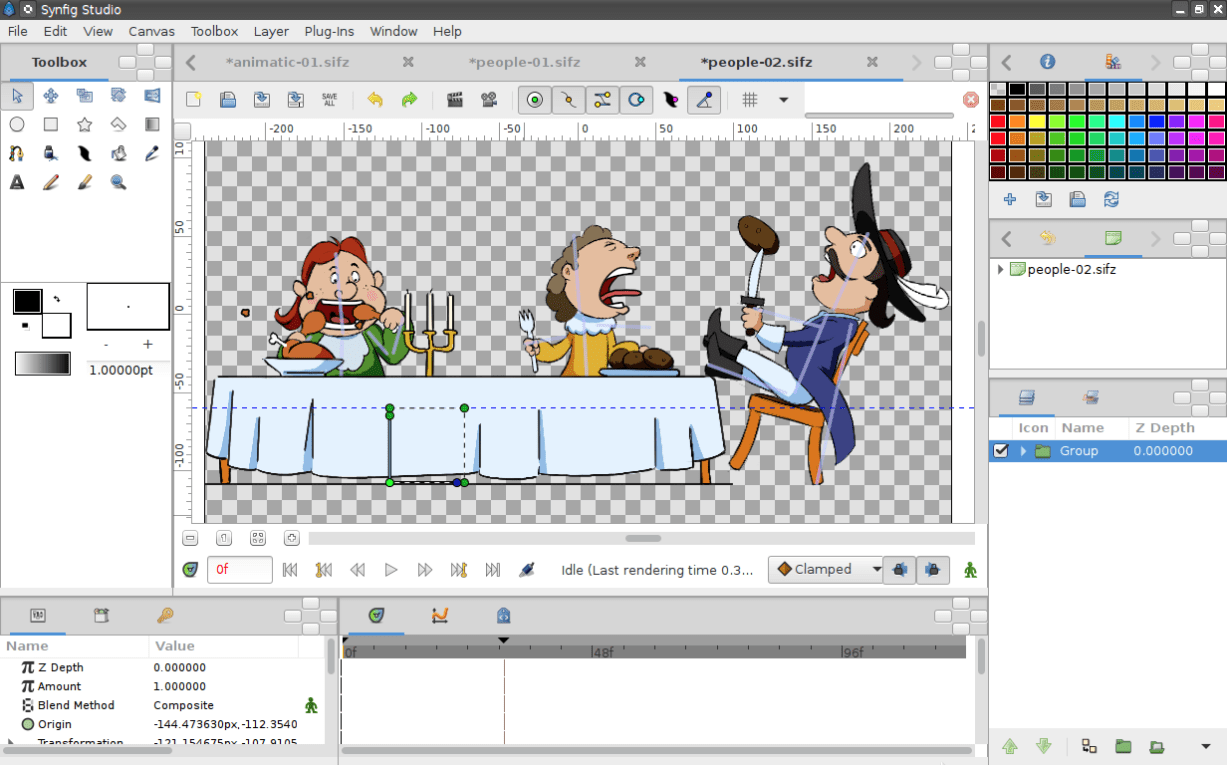
The next free video animation online is Synfig Studio, an open-source platform for creating 2D animated videos. With it, you use vector graphics to create timeline-based animations.
Like OpenToonz, it offers a bone system for animation controls so you can create natural movements. Create cutout animation using bitmap images, and use the additional Skeleton Distortion layer for complex deformations to bitmap artwork.
Advanced features include linking parameters for layers, allowing you to build character puppets and other advanced dynamic structures. It’s certainly not made for beginners, so turn to an easier option to get started before upgrading to Synfig’s advanced feature set.
Here’s an example of a fun animated short created with Synfig Studio:
10. Toontastic 3D
Platforms: Android, iOS
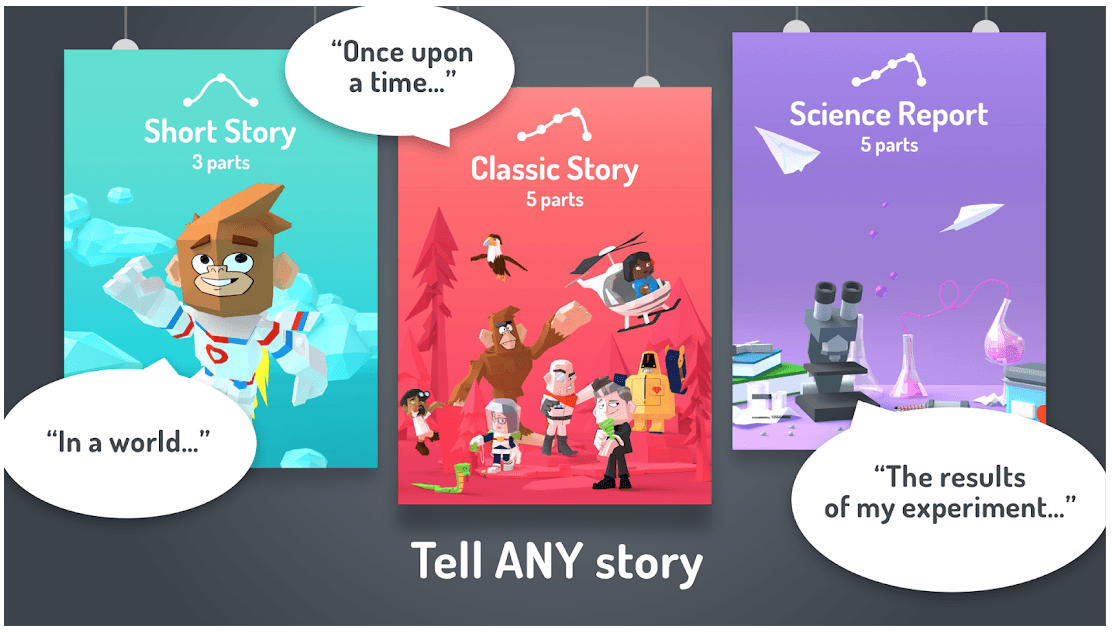
Google’s free animation software, Toontastic 3D, is meant for kids, but brands also can use it to make animated 3D videos. Get started with Toontastic by creating your own characters, either from scratch or based on an uploaded photo.
Toontastic encourages budding storytellers to get creative with their narratives, and brands can do the same. Plan your storyline, animate, add narration and music, and then export it to share it with the world.
Your storyline is based on Toontastic templates, each with a different number of scenes. Toontastic also has premade scenes to choose from, so the only “drawing” you need to do is when it comes to the characters.
If it sounds like too many steps, Google says you can create a one-minute video with up to six scenes in just a minute—though that doesn’t include the time it takes to create your characters upfront. Toontastic also works offline, so you can create videos on your daily commute or when the Wi-Fi’s out.
11. TubiTube
Platforms: Windows, Mac and Linux
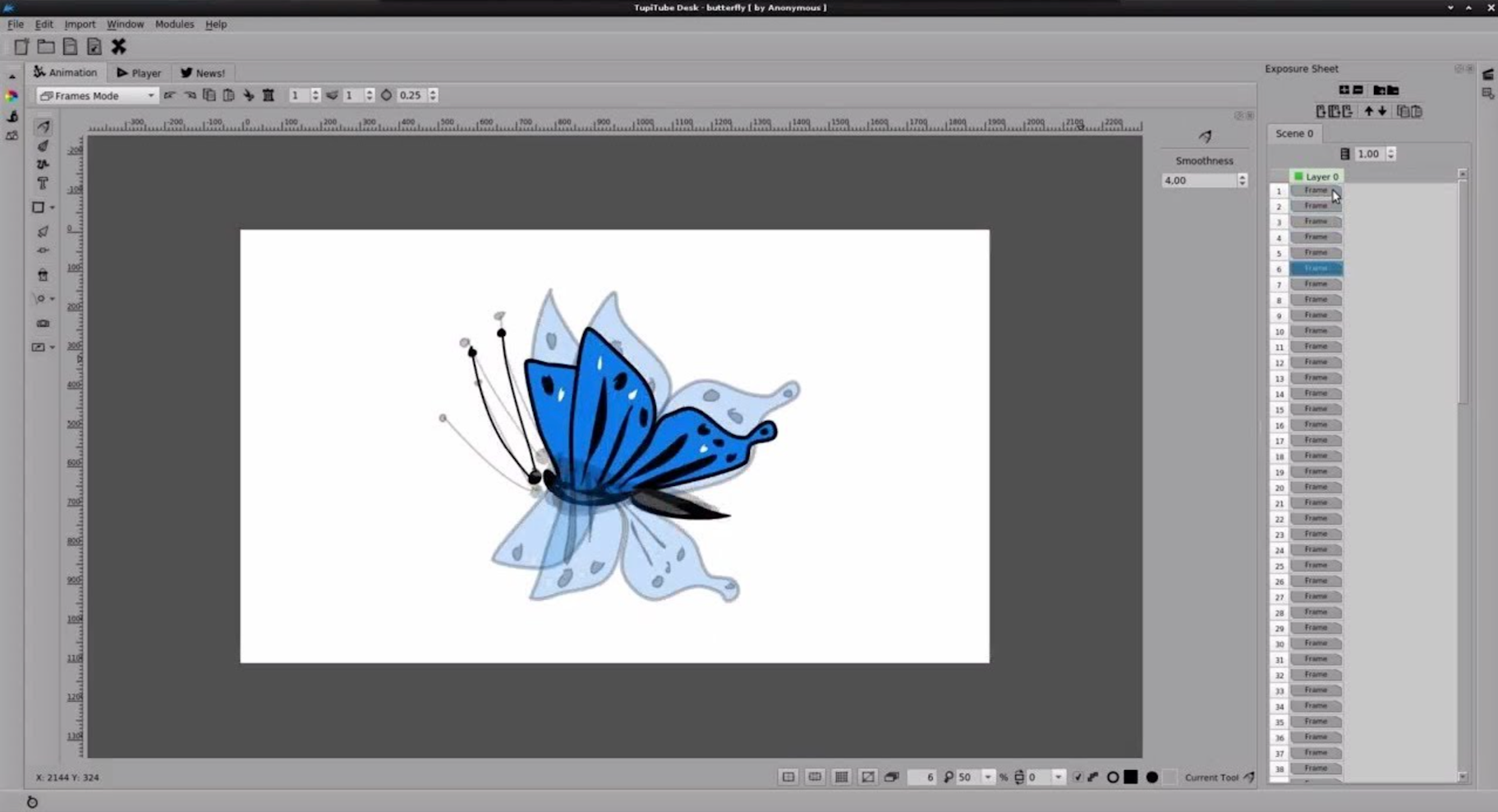
TubiTube is among the best video animation tools for complete beginners. It has a clean and simple user interface, meaning you can get right to creating animations without spending time figuring out the controls.
With TubiTube, you get a fantastic range of basic 2D animation solutions, including painting and drawing tools, vector/image importing, manual scaling, rotation, and opacity.
Available under the “GPL” license, TubiTube is ideal for budget-conscious animators, and it’s flexible too. You can render pieces in SWF, MPEG, and AVI formats.
12. Cinema 4D
Platforms: Windows and Mac
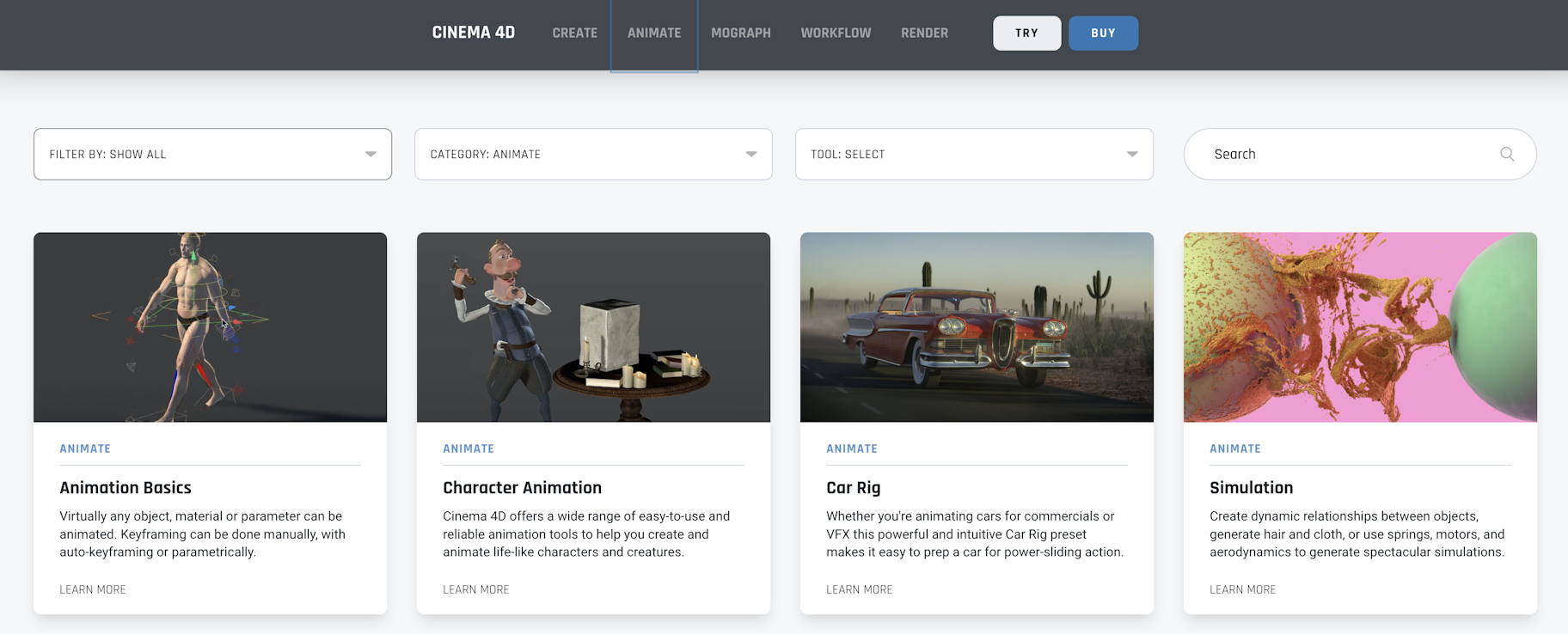
Cinema 4D is a versatile software that offers features like modeling, texture application, visual effects, and lighting, all within an intuitive user interface.
The customizable layout of Cinema 4D is ideal for creating the most convenient user experience for every animator. You also get access to Mograph, a feature designed to facilitate more complex sequences without the confusing elements of traditional software.
If you’re looking for something easy to learn but still scalable enough to help you create more sophisticated animations, this could be the tool for you.
13. Clara.io
Platforms: Web browsers, Mac, Windows, and Linux
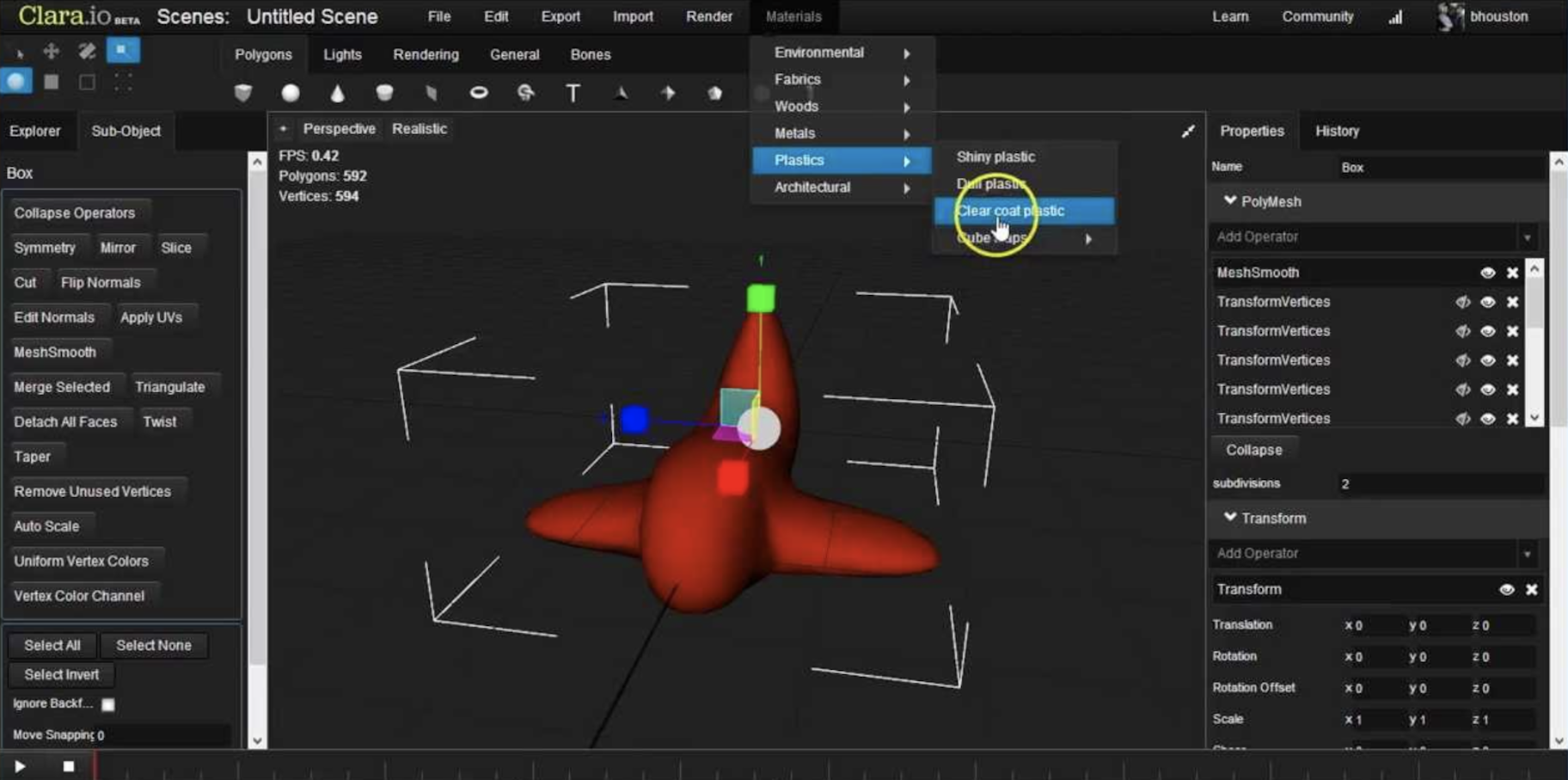
A web-based application for creative professionals Clara.io ensures you can work from your browser when creating, animating, and rendering 3D content. The streamlined interface comes with a range of powerful tools, including sub-object editing, VRay cloud rendering, and responsive workflows.
As you work on your animations using the modern interface, you can also invite other colleagues to get involved with you. The easy sharing and embedding functionalities make it easy to collaborate. Clara also automatically saves all your work and progress in the cloud.
There are more than 30 common 3D file formats supported for importing and exporting. What’s more, you can customize and extend the functionality of your application with plug-ins and REST API access.
If you need help figuring out what to build with Clara.io, there’s a fantastic 3D model library you can use for inspiration.



Animate your way to success
There you have it—a list of the best 13 free animation software for beginners and pros. The tool you choose really depends on your skill level, your hardware, and the types of videos you want to make. In summary, here’s what you get with the software highlighted in this article:
- Animaker: Simple, browser-based animation software for beginners, with paid upgrades available.
- Blender: Advanced open-source 3D animation software for people with video experience.
- K-3D: 3D animation software with polygonal modeling.
- OpenToonz: 2D animation software with a long list of features for proficient or expert video folks.
- Pencil2D: Hand-drawn, 2D animated videos with a simple interface that’s beginner-friendly but loaded with features.
- Plastic Animation Paper: Helpful for incorporating hand-drawn characters into 2D animated videos.
- Powtoon: Great for creating simple, three-minute explainer or customized video in presentation-style format.
- Stykz: Beginner-friendly, stick-figured-based 2D animation software.
- Synfig Studio: Robust software for creating vector-based animated videos with advanced character control.
- Toontastic 3D: For people who are new to creating animated videos; meant for kids but can create simple storytelling- and character-based videos for brands as well.
- TubiTube: For hobbyists, amateurs, and even children, this software is a great choice for starting your animation journey.
- Cinema 4D: Allows users to create complex sequences without the confusing elements of standard animation software.
- Clara.io: Offers a range of powerful tools that make it easy to animate your video content.
Which tool are you going to try first?






